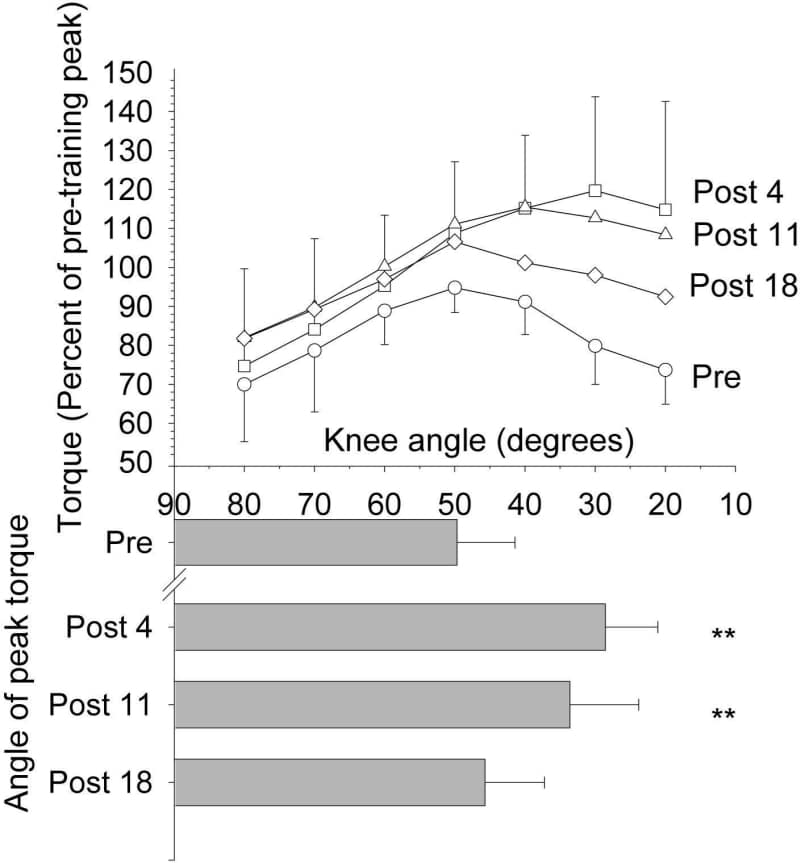Single bouts of muscle contractions with an eccentric or lengthening component have been observed to result in a shift in limb angle-torque relationship (Brocket et al. 2001). The aim of this study was to examine the persistence of this change after eccentric and concentric progressive resistance training. Thirty young adults (19 female, 11 male, aged 18 to 24 years, height 168.7±8.3 cm, body mass 65.9±11.4 kg, all data are mean ± S.D.) were randomly allocated into three groups of 10, control (CONT), eccentric training (ECCE) and concentric training (CONC). Volunteers completed informed consent documents and all procedures were approved by University of Limerick Research Ethics Committee. The ECCE and CONC groups performed seven sessions over 3 weeks of progressive resistance training of the right hamstrings muscle, using a standard barbell and a leg curl machine. Load was set at 2 sets of 8 repetition max at each session. Right leg hamstrings to quadriceps torque ratio was measured during isometric contraction before training and 4, 8 and 11 days after training; subjects were seated with knee angle of 90 deg. Torque-angle relationship was measured at the same time points. For this measurement, isometric torque was recorded at seven equally spaced knee angles, from 20 to 80 deg from full extension with volunteers lying prone. All measurements were recorded on an isokinetic dynamometer (Con Trex, Switzerland). Hamstring-quadriceps torque ratio did not change in any group. In the CONC group, the angle of peak isometric torque increased from 46.0±5.2 deg pre-training to 53.0±14.9 deg on day 4 following training cessation (repeated measures ANOVA, P〈0.05), with no significant strength gains. In the ECC group, peak torque was increased over baseline on day 4 and day 11 post-training (P〈0.05) The angle at which peak torque occurred was decreased on day 4 (50.0±8.2 deg pre-training, 29.0±7.4 deg on day 4) and on day 11 (34.0±9.7 deg) (both P〈0.01), but was similar to baseline 18 days after training. The control group knee angle-torque relationship did not change during the study. Therefore, both training methods induced a temporary change in torque-angle relationship. Concentric training increased and eccentric training decreased the knee angle at which peak torque was measured. Torque-angle changes in both groups were reversed by day 18 after training.
University of Bristol (2005) J Physiol 567P, PC214
Poster Communications: Progressive resistance training temporarily alters hamstring torque-angle relationship in humans
Donnelly, Alan E; Kilgallon, Mark; Shafat, Amir;
1. Physical Education and Sport Sciences, University of Limerick, Limerick, Ireland.
View other abstracts by:
Figure 1. The torque-angle relationship in eccentrically-trained hamstring muscle group (mean ± S.D. N=10). Open circles are pre-training. Squares denote four days post-training; triangles and diamonds are 11 and 18 days after cessation of training respectively. ** P<0.01 compared to pre-test.
Where applicable, experiments conform with Society ethical requirements.

